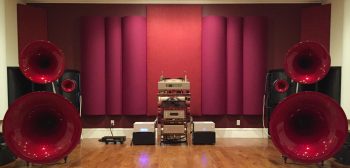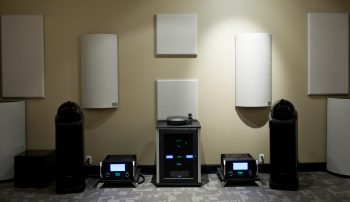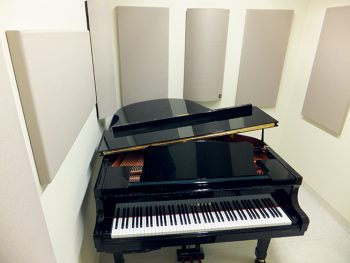Your Brain on Sound – Understanding the Fundamentals About Sound & Hearing
Understanding a few fundamentals about what sound is and how we hear it will help you better understand how acoustics work. Our sense of hearing is a finely-tuned evolutionary adaptation to our environment, one of the critical tools in our survival kit.
Understanding how sound and hearing are related better enables us to control, shape, and enhance our acoustic environments.
If a Tree Falls in the Forest, Does it Make a Sound If No One’s There to Hear It?
Here’s a classic question for you: “if a tree falls in the forest, does it make a sound if no one’s there to hear it?”
It’s really a philosophical thought experiment at the conjunction of observation, perception, and “knowing” – a.k.a. “cognition.”
Our senses deliver our brains vast arrays of information. After sorting through the raw data of our touch, taste, smell, sight, and hearing, complex neurological systems generate mental representations of reality.
This points to an important characteristic of sound: it exists as a mental construction. It’s “all in our heads,” a cognition within the subjective phenomenon of consciousness.
In other words, if there’s no one there to hear it, one might argue that a tree falling in the woods doesn’t make any sound at all.
But enough philosophy … let’s have a closer look at what we know about the behavior of sound and how we can shape and control it to enhance our acoustical environments to better our satisfaction and understanding.
A Few Fundamentals: What is Sound and Hearing?
 When matter vibrates, the energy of its vibration exerts pressure on the molecules of the medium it’s in. This energy propagates through media in wave forms that can be measured and that occur in different lengths (frequencies) and amplitudes (degree of power) – all depending on the physical properties of a particular source.
When matter vibrates, the energy of its vibration exerts pressure on the molecules of the medium it’s in. This energy propagates through media in wave forms that can be measured and that occur in different lengths (frequencies) and amplitudes (degree of power) – all depending on the physical properties of a particular source.
Sound energy is transmitted through gases, liquids, and solids by exerting pressure on the molecules of those media. That’s why there is no sound in the vacuum of space – there is no medium through which to propagate any energy.
When sound energy reaches us, the microscopic hairs and delicate bones inside our ears vibrate in response to it, and a complex system of nerve endings transmits that information to our brains which then accomplish the incredible task of interpreting this information to construct a “sound image” in our mind.
In other words, “sound,” per se, doesn’t exist “out there” – in the world at large – nor does it exist exclusively in the minds of hearing subjects. As far as sound is concerned, all that exists is the presence of kinetic energy emanating from vibrating matter and propagating through some medium in wave forms. It is only after a brain interprets this energy that sound is perceived; i.e. the hearer hears.
Sound Imaging: Hearing as a Mental Construction and Evolutionary Achievement
Over countless millennia, our hearing has evolved to such an extent that it forms a critical component in our minds’ ability to construct representations of the world.
The sound images that our minds generate are as potent, visceral, and central to our safely navigating the world at large as is our ability to interpret the light that enters our eyes and enables us to see it as well – perhaps even more so, because our hearing system never sleeps like our “seeing system” does.
Our brains and ears are finely-tuned to construct accurate sound images in our minds. Under natural acoustic conditions, our hearing enables us to determine the location or source of sound, its distance, the size of the entity creating the sound, and, most importantly, whether a particular sound represents danger or not.
Hearing, like all of our other senses, evolved to enhance our survival. When we hear a sound, we almost immediately recognize and generate an “acoustic image” of its source – what, where, how big or small, and whether it represents a threat or not.
Transients
Our ears are highly responsive to short, sharp sounds – twigs snapping or glass shattering. Sound professionals refer to them as “transients.” In the context of evolutionary defense strategies, this makes total sense. We’ve got to know where a sound is coming from if we hope to escape whatever potential danger may exist. Our brains quickly calculate whether immediate danger is imminent or whether there’s no threat at all.
Our lives could literally depend on it! “Was that the blood curdling roar of a pouncing lion or the plaintive cry of an abandoned kitten?”
Stereo Hearing: Timing, Loudness, and Tone Differences in 3 Dimensions
Similar to the way that bifocal vision enables us to perceive three dimensions, having two ears enables us to form sound images that accurately map acoustic environments in three dimensions as well.
Transients help our brains create a sound image by comparing the differences in timing, loudness, and tone between our two ears.
When you record using two microphones, you record the differences in timing, loudness, and tone between them, creating the stereophonic effect. Think of how much mileage some of your favorite psychedelic music got out of those sweeping left/right pans that helped listeners feel like they were tripping to the galaxy’s edge and beyond, or at least to the dark side of the moon.
The stereophonic effect provides an accurate “sound image playback” because it simulates our ears’ physical separation and orientation, and this is central to the way we expect to hear the world. Simply put: it sounds ‘more natural.’
Big Point #1: Good Room Acoustics Are Essential for Accurate Sound Imaging
 We seem to be most “acoustically satisfied” when we hear accurate sound images played back with electronics, speakers, and acoustics that don’t damage or interfere with timing (phase), loudness (amplitude), or tone (harmonics).
We seem to be most “acoustically satisfied” when we hear accurate sound images played back with electronics, speakers, and acoustics that don’t damage or interfere with timing (phase), loudness (amplitude), or tone (harmonics).
In our video, How Sound Works (In Rooms), we show how flat surface reflections damage timing, loudness, and tone. Using two nerf guns, we demonstrate the difference between direct sound and reflected sound, and we explain how strong reflected sound interferes with our ability to form accurate sound images.
To reduce excessive reverberation, interference patterns, and distortion, you need to use a combination of sound absorption and diffusion.
A Fine-Tuned Balance: Absorbers and Diffusers
 Some acoustical treatments, however, can be problematic because they also damage timing, loudness, and tone – otherwise known as phase, amplitude, and harmonics.
Some acoustical treatments, however, can be problematic because they also damage timing, loudness, and tone – otherwise known as phase, amplitude, and harmonics.
Absorbers
While some absorption is good, too much of it can kill the sound energy in your room. When you overly-dampen reverberation, it’s harder for your brain to perceive space and location, and it also diminishes pitch perception.
It kills the room ambience and creates a mis-match between what our brains expect to hear and what we’re actually hearing, and that doesn’t sound natural.
Diffusers
Diffusers help to spread out reflected sound energy, thereby reducing the potential for strong reflected sound to interfere with direct sound. Since our hearing has evolved as a survival tool, our brains are very sensitive to phase—or timing—for the purposes of sound location.
Diffusers don’t kill ambience or pitch perception, but there is a problem. Namely, “phase shift diffusers” – like “quadratic residue” designs – work by distorting the timing or phase relationships within the reflections, and that will damage the sound image.
Big Point #2 – Timing Accuracy Is Essential to Accurate Sound Imaging
Timing accuracy—phase coherence—is essential for accurately recording and hearing sound imagery. Phase-non-coherent diffusers diminish our brain’s ability to form accurate sound images. In other words, our brains can’t make sense of the sound we’re hearing.
Phase Coherent Diffusion
Can we use common sense to improve our sense of hearing? Absolutely.
“Phase-Coherent Diffusion” is an acoustic treatment that preserves Timing (Phase), Loudness (Amplitude) and Tone Relationships (Harmonics). It’s been around for some time now. RCA in New York, for example, was using this method as early as 1941.
Phase-coherent diffusers smoothly spread out sound reflection energy, reduce “hot spots,” and allow us to use less absorption. This improves our hearing by retaining a level of ambience that’s agreeable to our ears. It preserves accurate sound imaging and location, and helps us hear crisper, clearer sound overall as well as a more expansive sense of space.
Conclusion
Our brains are truly amazing. Given the right acoustics, they’re capable of using sound to determine the location, size, and type of a sound almost instantly. Because of the incredible fine-tuning of our hearing, we are sensitive to our acoustic environments. We definitely have the means to significantly improve the sound in our work environments, homes, and recreational spaces.
Treat your room with Acoustical Surfaces Curve Diffusors. Mounted vertically or horizontally, they are the most natural-sounding, accurate, affordable improvement you can make to room acoustics … and the easiest. They’re phase-coherent, lab-tested, and field-proven.
For more information and a wealth of resources, please visit https://www.acousticalsurfaces.com/ and/or https://www.acousticgeometry.com/.





